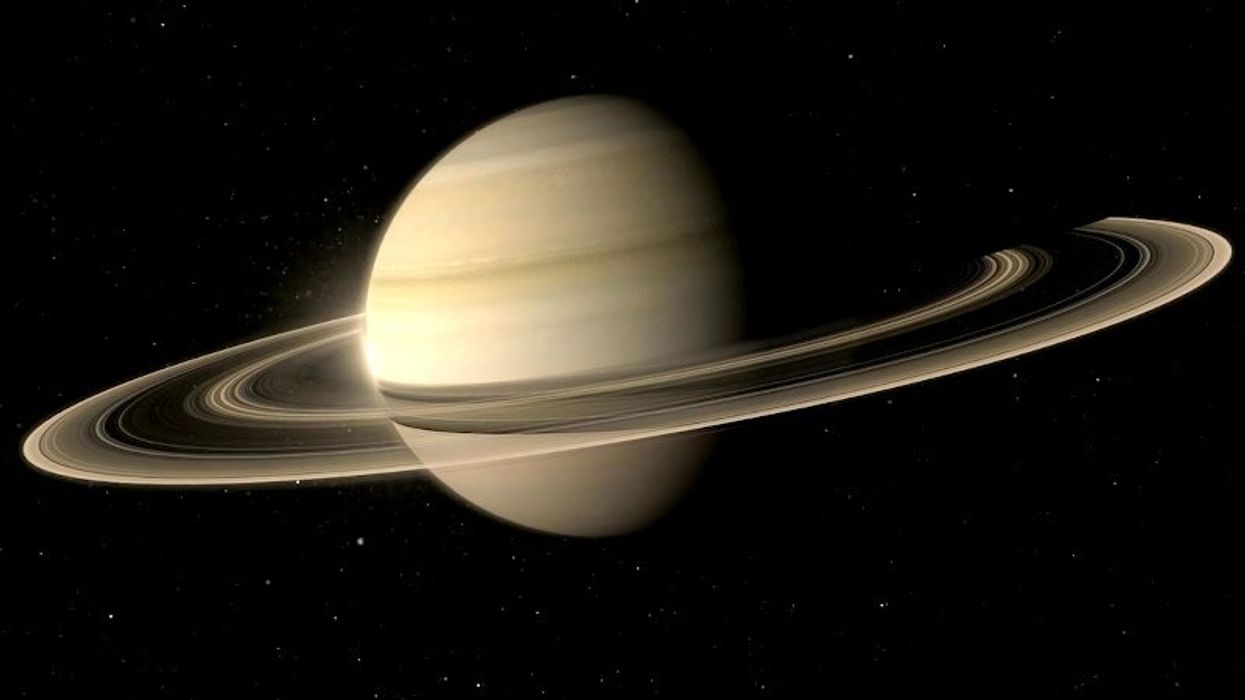Alex Daniel
Nov 07, 2023
Catch Saturn as it reaches opposition on Aug. 27
AccuWeather / VideoElephant
Saturn’s iconic rings have always been what sets the planet apart from the rest – but in about 18 months they will disappear from view entirely.
There’s no reason to be alarmed – they’re not going anywhere. Instead, the planet will be tilted so the rings are straight on with our line of sight, making them seem to vanish.
You might be wondering how this is possible. After all, Saturn’s rings are absolutely massive, extending about 140,000 kilometres in parts and covering an area equivalent to 30 Earths.
However, they are incredibly thin, with some parts as little as 100 metres thick. We’ve not got much chance of seeing them from 1.2bn kilometres away then.
Scientists have calculated that the angle of tilt in relation to Earth, which was nine degrees in August, will drop to zero on 23 March 2025
This only happens every 15 years or so, and is because we are moving across them. The last time this rare astronomical event happened was in September 2009, and before that, it had not occurred since February 1996.
Saturn's rings are going to vanish from our view in 18 months, but don't panic, it\u2019s just an optical illusion. \ud83e\ude90\n\nCome March 2025, Saturn\u2019s iconic rings will be rendered invisible from our terrestrial perspective due to the planet\u2019s tilt within its axis of orbit. 1/— (@)
Astronomers will not get the chance to view Saturn from this unique perspective again until October 2038.
And while it’s a terrible time to be looking for the rings, Saturn’s moons will become much more visible as the planet’s South Pole tilts to face us.
The next decade-and-a-half will also see the bottom side of the rings pull into view, something we haven’t seen for 15 years.
Saturn’s rings are made of chunks of ice, rock and dust which are stuck in its huge gravitational pull. Some of the particles are tiny, like grains of sand. Others are the size of mountains.
The disappearance of Saturn's rings will only be temporary this time, but scientists have also warned that they may one day dissipate for good.
NASA's Cassini probe flew through Saturn's rings 22 times before its 2017 death dive into the planet, and found the rings were vanishing at a “worst case scenario rate”.
Cassini found they were losing as much as 2,800kg every second. Scientists are still trying to work out exactly why that’s happening.
One theory is that radiation from the Sun causes particles to get an electrical charge, causing them to bind with gas in Saturn’s atmosphere and get pulled out of the rings towards the planet. The phenomenon is called “ring rain”.
Dr James O'Donoghue, a planetary scientist at the Japan Aerospace Exploration Agency, said: “Currently, research suggests the rings will only be part of Saturn for another few hundred million years.”
A little bit of time to wait, then.
How to join the indy100's free WhatsApp channel
Sign up to our free indy100 weekly newsletter
Have your say in our news democracy. Click the upvote icon at the top of the page to help raise this article through the indy100 rankings.
Top 100
The Conversation (0)














